Huawei’s P30 Pro, which has been
launched in India
at Rs 71,990 is a premium Android smartphone like no other. It packs in the latest Android software, has plenty of “AI” tags to its branding and has an arsenal of lenses that will make you forget your DSLR on your next vacation. I used the smartphone for a week and there’s plenty of improvements not just over its predecessor, the
P20 Pro
, but the Mate 20 Pro as well. [caption id=“attachment_6439111” align=“alignnone” width=“1024”] The Huawei P30 Pro. Image: Omkar Godambe[/caption] More importantly, at its asking price, it almost makes the
Samsung Galaxy S10 Plus
look redundant and gives
Google’s Pixel 3 XL
a tough fight in the only area it’s good at, that Portrait mode. The Huawei P30 Pro is not perfect, and that display notch with its not-so-secure 2D face unlock will find those looking bezel-less smartphone designs, looking the other way. Then there’s any Huawei smartphone’s biggest pain point, the rather dated software. It’s boring, looks old and needs a serious revamp. If Samsung can pull it off and take complete U-turn with One UI, I am pretty sure Huawei is quite capable of pulling off the same. Despite the Huawei P30 Pro’s flaws, I still dig it and here’s why.
The Huawei P30 Pro. Image: Omkar Godambe[/caption] More importantly, at its asking price, it almost makes the
Samsung Galaxy S10 Plus
look redundant and gives
Google’s Pixel 3 XL
a tough fight in the only area it’s good at, that Portrait mode. The Huawei P30 Pro is not perfect, and that display notch with its not-so-secure 2D face unlock will find those looking bezel-less smartphone designs, looking the other way. Then there’s any Huawei smartphone’s biggest pain point, the rather dated software. It’s boring, looks old and needs a serious revamp. If Samsung can pull it off and take complete U-turn with One UI, I am pretty sure Huawei is quite capable of pulling off the same. Despite the Huawei P30 Pro’s flaws, I still dig it and here’s why.
One camera for every occasion
Going by the sheer number of cameras, it’s obvious, that imaging is the highlight of the P30 Pro. With so many cameras available, there’s literally one for every occasion. [caption id=“attachment_6439011” align=“alignnone” width=“1280”] The Leica optics on the camera are quite impressive. Image: Omkar Godambe[/caption] On a vacation up in the mountains, that ultra-wide angle lens can shoot some breath-taking photos. At a rock show and need to get closer to the action on stage? If that 5X optical zoom does not suffice you can still get a pretty good image, even at 30X, using that 20 MP sensor. And for regular shots, there’s 48 MP camera that takes care of everything from bokehlicious portraits to the best low light shots one can imagine. Huawei has improved the processing and treatment of the images drastically, even over the recent Mate 20 Pro! Photos shot in most lighting conditions are not an over sharpened mess like we have seen from Huawei smartphones in the past. They are still a wee bit low on resolved details when compared to the Google Pixel 3 but it has low light capabilities that beat the competition by a mile.
It beats the Google Pixel 3 XL Night Sight by a huge margin
. To check out all the 190 camera samples we have shot during testing, simply head to our Flickr album.
The Leica optics on the camera are quite impressive. Image: Omkar Godambe[/caption] On a vacation up in the mountains, that ultra-wide angle lens can shoot some breath-taking photos. At a rock show and need to get closer to the action on stage? If that 5X optical zoom does not suffice you can still get a pretty good image, even at 30X, using that 20 MP sensor. And for regular shots, there’s 48 MP camera that takes care of everything from bokehlicious portraits to the best low light shots one can imagine. Huawei has improved the processing and treatment of the images drastically, even over the recent Mate 20 Pro! Photos shot in most lighting conditions are not an over sharpened mess like we have seen from Huawei smartphones in the past. They are still a wee bit low on resolved details when compared to the Google Pixel 3 but it has low light capabilities that beat the competition by a mile.
It beats the Google Pixel 3 XL Night Sight by a huge margin
. To check out all the 190 camera samples we have shot during testing, simply head to our Flickr album.
 The Pixel 3 still clicks great Portrait shots but I prefer the less artificial background blur on P30 Pro. If you check out my
detailed camera comparison
, it’s easy to point out how close the P30 comes to the Pixel when it comes to shooting portraits. At times, it’s even better than the Pixel.
The Pixel 3 still clicks great Portrait shots but I prefer the less artificial background blur on P30 Pro. If you check out my
detailed camera comparison
, it’s easy to point out how close the P30 comes to the Pixel when it comes to shooting portraits. At times, it’s even better than the Pixel.
Low light camera performance is better than anything I have seen so far. This smartphone forces you to experiment, step into the darkest places because it captures what your eyes cannot see . The same applies to the zoom capabilities which are beyond what any other smartphone is able to capture today. While the 5X zoom is impressive, things get really interesting when you zoom beyond 20X and eventually to 50X.
I would say that 50X sample is barely usable, but I often ended up zooming till 50X to get a glimpse of what my eyes could not see, like the inscriptions on monuments and more. The ultra-wide angle lens with autofocus still gets you better shots even though the Samsung Galaxy S10 Plus clicks the best landscape photos. (Also read:
The Huawei P30 Pro camera comparison: The mighty Google Pixel 3 finally takes a backseat
) While the quality of these shots are top-notch, they do vary depending on the camera or the lens you end up using. And switching from the standard 1X lens to the 0.6X ultra-wide angle lens will suddenly see the white-balance shift drastically. The same can be said about the switch to the telephoto lens which becomes a problem when you do the same while shooting video. Moreover, the shift is not as smooth but more like a jump cut transition and could certainly do with a bit of polish. Video is a drastic improvement over the Mate 20 Pro and the P20 Pro but is not the best I have seen from smartphones this year. While 1080p 30 fps and 60 fps videos looked fine, 4K at 30 fps had a stuttering problem when panning. Stabilisation on the selfie camera was pretty good, but the focus was a bit jittery in dim light shooting scenarios like a pub. Samsung does a better job when compared to Android smartphones but I’d still pick the
iPhone XR
or the XS if all I wanted to shoot was video. [caption id=“attachment_6441561” align=“alignnone” width=“1280”]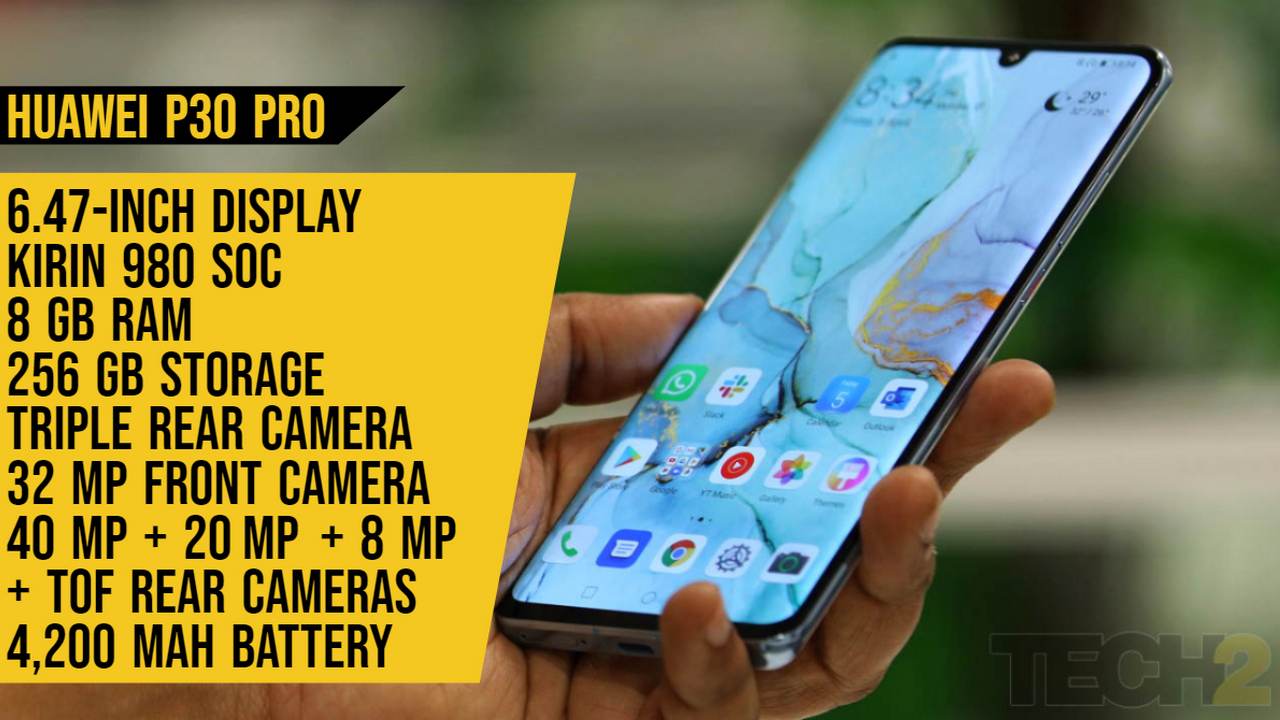 Here’s a quick look at the specifications of the Huawei P30 Pro.[/caption]
Here’s a quick look at the specifications of the Huawei P30 Pro.[/caption]
Interesting design choices made here
Since the design is a really subjective topic, I showed the P30 Pro to my colleagues in the office and a majority of them liked the design. While I personally found the Breathing Crystal colour quite attractive and premium, considering that it gives out an almost jade-like look and feel, others did find it looking a bit “Chinese”. [caption id=“attachment_6439061” align=“alignnone” width=“1280”] The Huawei P30 Pro in Breathing Crystal. Image: Omkar Godambe[/caption] My favourite is the Amber Red, but sadly that finish will not make it to India. The Aurora finish looks good as well and as a Huawei representative explained to me, the Amber Red, Breathing Crystal, Pearl White, Aurora and Black colours are supposed to represent the colours of the sky from sunrise to the dark of night. Interesting stuff! Looks aside, the rear 3D-curved glass screen unlike the front, like every other Huawei flagship in the past, is a fingerprint magnet. It gets smudged up quite easily, but thankfully, these are easy to wipe off this time around. [caption id=“attachment_6439041” align=“alignnone” width=“1280”]
The Huawei P30 Pro in Breathing Crystal. Image: Omkar Godambe[/caption] My favourite is the Amber Red, but sadly that finish will not make it to India. The Aurora finish looks good as well and as a Huawei representative explained to me, the Amber Red, Breathing Crystal, Pearl White, Aurora and Black colours are supposed to represent the colours of the sky from sunrise to the dark of night. Interesting stuff! Looks aside, the rear 3D-curved glass screen unlike the front, like every other Huawei flagship in the past, is a fingerprint magnet. It gets smudged up quite easily, but thankfully, these are easy to wipe off this time around. [caption id=“attachment_6439041” align=“alignnone” width=“1280”]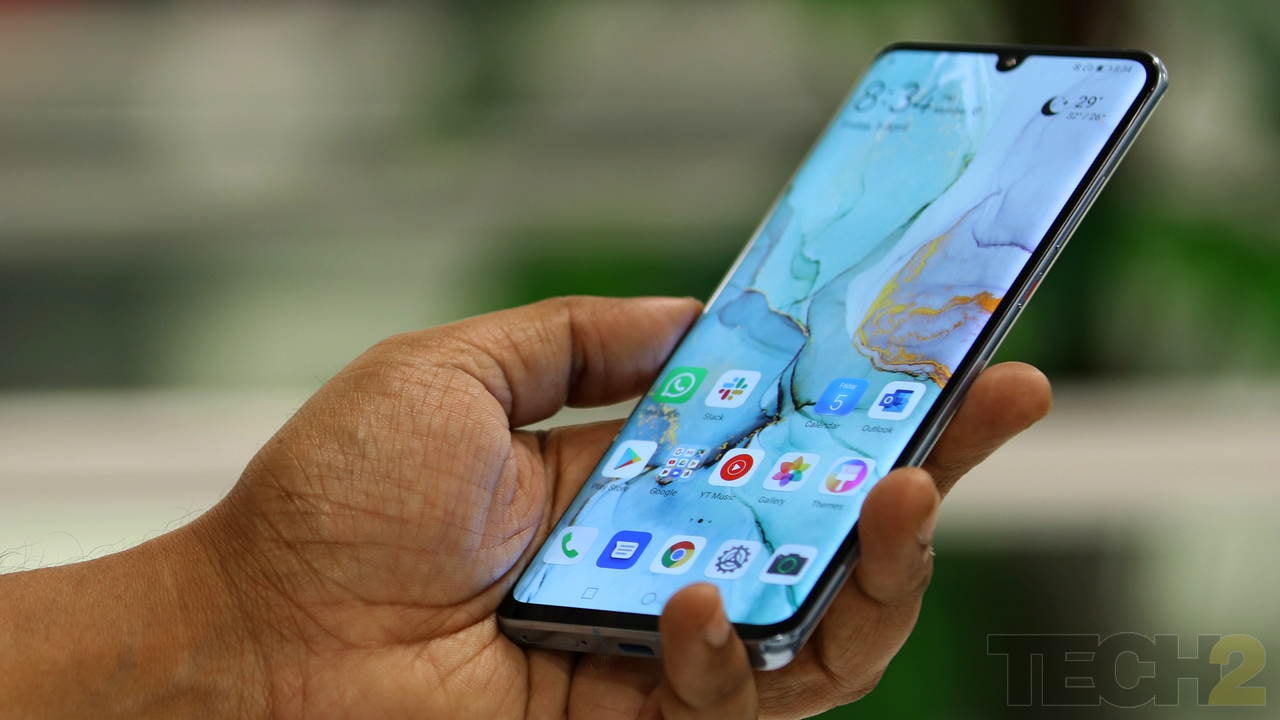 The Huawei P30 Pro feels quite premium. Image: Omkar Godambe[/caption] The fit and finish are near perfect with no sharp edges or corners, just that the phone is a bit thick and does get a bit difficult to hold depending on the feature that you are using at that given moment. I’m glad that Huawei skipped on the USB port speaker on the Mate 20 Pro, but was a bit disappointed that a phone this large and chunky did not pack in two. Despite its flattened out top and bottom edges, I was a bit surprised that the smartphone did not stand straight up on its bottom edge, but could stand up on its top edge. Is the design not perfectly balanced?
The Huawei P30 Pro feels quite premium. Image: Omkar Godambe[/caption] The fit and finish are near perfect with no sharp edges or corners, just that the phone is a bit thick and does get a bit difficult to hold depending on the feature that you are using at that given moment. I’m glad that Huawei skipped on the USB port speaker on the Mate 20 Pro, but was a bit disappointed that a phone this large and chunky did not pack in two. Despite its flattened out top and bottom edges, I was a bit surprised that the smartphone did not stand straight up on its bottom edge, but could stand up on its top edge. Is the design not perfectly balanced?
And then there’s that notched display
The display on the P30 Pro is not as sharp as the one on the Mate 20 Pro which featured QHD+ unit. To the naked eye and the casual user, it is quite hard to tell that Huawei used a FHD+ display but it has its benefits. The lower resolution display means that there is lesser stress on the GPU, which also means better battery savings. And despite using a slightly bigger display than the Mate 20 Pro and the same chipset and battery combo, the battery life saving is drastically different. So yes, the move to FHD+ is beneficial in more ways than one. [caption id=“attachment_6439051” align=“alignnone” width=“1280”] The dewdrop notch does not get in your way. Image: Omkar Godambe[/caption] As for the display itself, it’s top class, but there are a few optimisation problems. I liked that the colours are not as punchy as the Mate using the Natural colour profile and that it is bright enough for outdoor viewing since you will be using this smartphone to click photos outdoors. What I did not like was the palm rejection, which accidentally pauses videos, scrubs across the zoom controls when using the camera and does other things even though your digits are barely touching the skinny bezels around the edges of the device. Indeed, this can be fixed via a software update, but it is a bit annoying. And then there’s that notch, which almost every premium smartphone maker has been trying to avoid. It’s way smaller than the one on the iPhone XS, and even smaller than the Galaxy S10 Plus’ hole-punch. But it’s not as distracting as a regular wider notch so I won’t count it as a negative. The in-display fingerprint reader unlike the fidgety ultrasonic unit on the Galaxy S10 Plus actually works quite well so I did not need to use the 2D face unlock system on the phone.
The dewdrop notch does not get in your way. Image: Omkar Godambe[/caption] As for the display itself, it’s top class, but there are a few optimisation problems. I liked that the colours are not as punchy as the Mate using the Natural colour profile and that it is bright enough for outdoor viewing since you will be using this smartphone to click photos outdoors. What I did not like was the palm rejection, which accidentally pauses videos, scrubs across the zoom controls when using the camera and does other things even though your digits are barely touching the skinny bezels around the edges of the device. Indeed, this can be fixed via a software update, but it is a bit annoying. And then there’s that notch, which almost every premium smartphone maker has been trying to avoid. It’s way smaller than the one on the iPhone XS, and even smaller than the Galaxy S10 Plus’ hole-punch. But it’s not as distracting as a regular wider notch so I won’t count it as a negative. The in-display fingerprint reader unlike the fidgety ultrasonic unit on the Galaxy S10 Plus actually works quite well so I did not need to use the 2D face unlock system on the phone.
Fast, but downright boring software
EMUI has got a few updates with the P30 Pro, there are subtle cosmetic changes like new icons and deeper down a new file system that according to Huawei makes the phone up to 20 percent faster than the older ones. In day to day use, the phone did feel fluid and fast even compared the Mate 20 Pro, despite the amount of bloatware that Huawei loads on to it smartphones with duplicate apps. [caption id=“attachment_6441281” align=“alignnone” width=“1280”]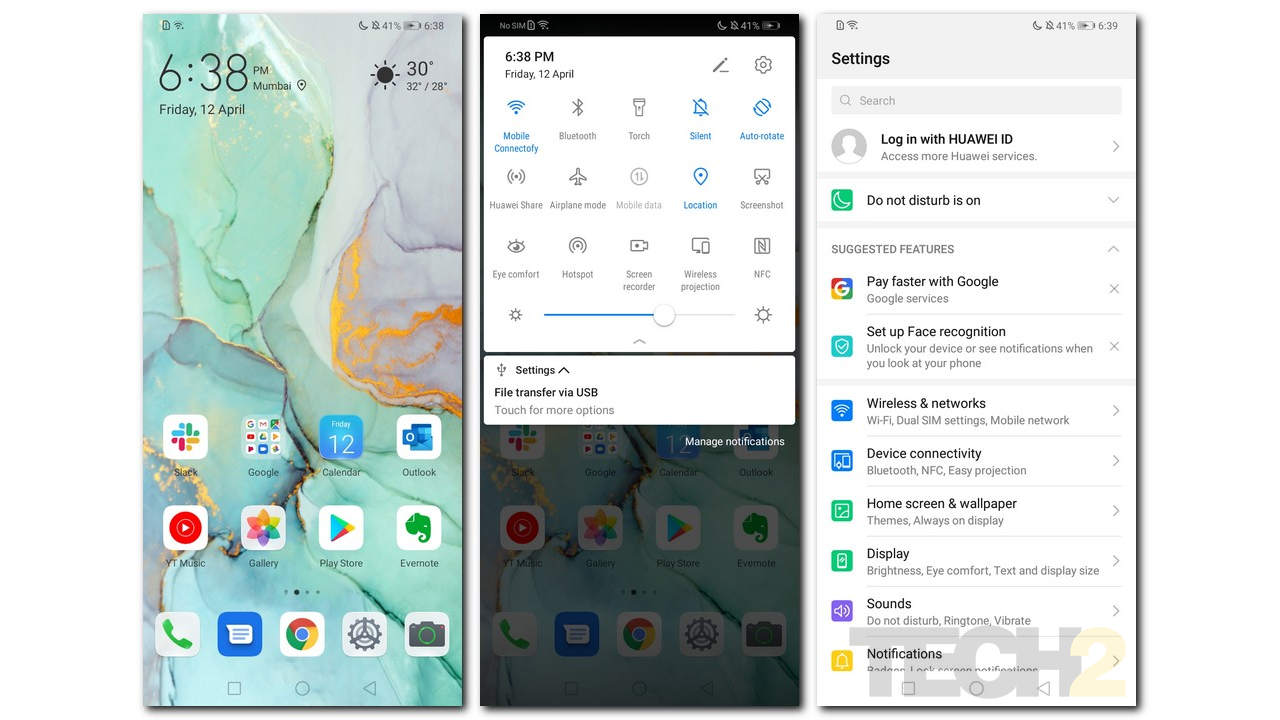 Huawei’s software may have changed under the hood, but nothing has changed cosmetically.[/caption] It’s almost like my appreciation for custom Android skins has grown over the standard stock vanilla interface that the Pixel devices offer these days. This is more because of the customisation options (theming, UI navigation, gaming optimisations etc.) that you get, something that Android Q is expected to bring in the next milestone update but currently does not offer. Android is about customisation and the current Pixel software is anything but customisable when it comes to navigation and the user interface (not themes). But EMUI still looks dated and downright boring in comparison to Samsung’s One UI, which lends a modern minimalistic look for Samsung’s multitude of smartphones. Here’s hoping that the next Huawei phone packs in something refreshing and new for once.
Huawei’s software may have changed under the hood, but nothing has changed cosmetically.[/caption] It’s almost like my appreciation for custom Android skins has grown over the standard stock vanilla interface that the Pixel devices offer these days. This is more because of the customisation options (theming, UI navigation, gaming optimisations etc.) that you get, something that Android Q is expected to bring in the next milestone update but currently does not offer. Android is about customisation and the current Pixel software is anything but customisable when it comes to navigation and the user interface (not themes). But EMUI still looks dated and downright boring in comparison to Samsung’s One UI, which lends a modern minimalistic look for Samsung’s multitude of smartphones. Here’s hoping that the next Huawei phone packs in something refreshing and new for once.
Blistering performance
That 7 nm Kirin 980 chipset is blazing fast! While EMUI’s file system and software optimisations help deliver smooth app experience, the Mali GPU delivers a buttery smooth gaming experience. Whether its PUBG Mobile, Shadowgun Legends or Asphalt 9: Legends, everything runs smooth and stutter-free. More importantly, the phone does not warm up even during extended gaming sessions. [caption id=“attachment_6439021” align=“alignnone” width=“1280”]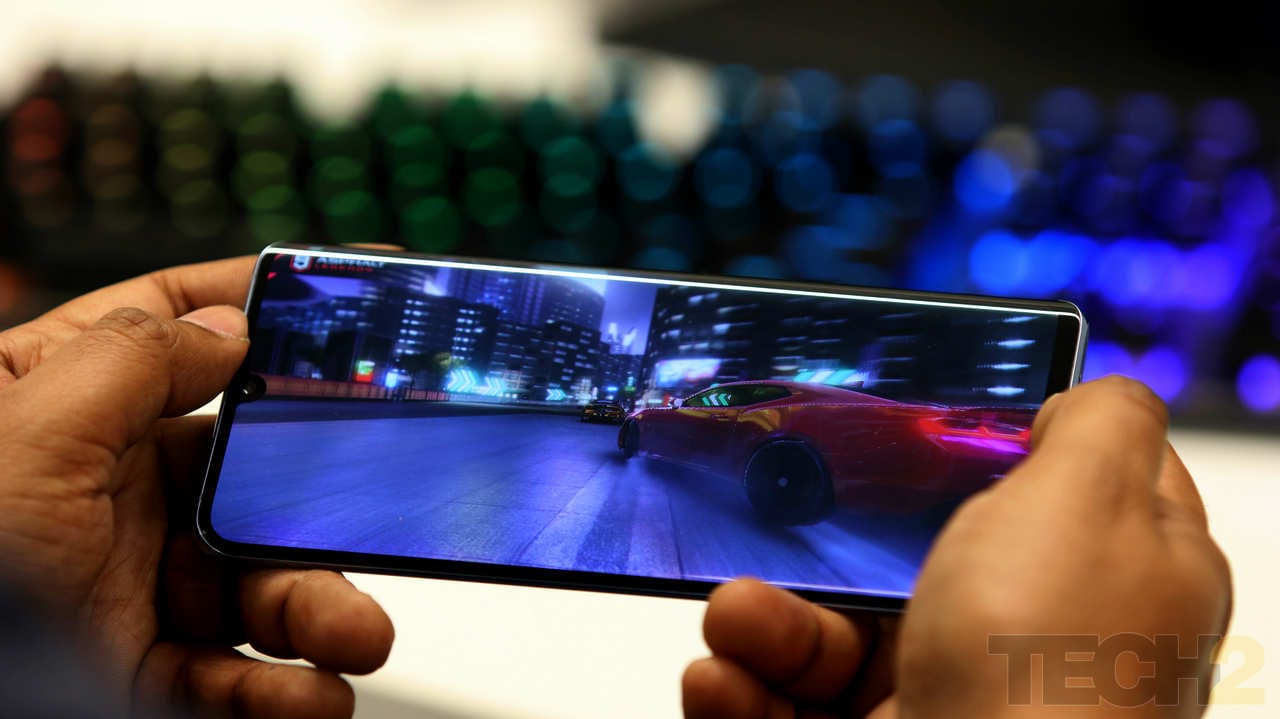 The Huawei P30 Pro runs quite cool while gaming. Image: Omkar Godambe[/caption] Audio quality using the in-box earphones is decent, but I saw better results using my own selection of headphones. Placing calls was a surprisingly good considering that the smartphone does not have a physical speaker for a earpiece. Huawei’s Acoustic Display technology is a rather different experience as you really don’t have to bother with accurately placing your phone’s receiver near your ear canal. The electromagnetic sound levitation tech basically throws sound from minor vibrations in the display directly into your ears and I could hear someone even on a windy day or on a crowded street. [caption id=“attachment_6439071” align=“alignnone” width=“1280”]
The Huawei P30 Pro runs quite cool while gaming. Image: Omkar Godambe[/caption] Audio quality using the in-box earphones is decent, but I saw better results using my own selection of headphones. Placing calls was a surprisingly good considering that the smartphone does not have a physical speaker for a earpiece. Huawei’s Acoustic Display technology is a rather different experience as you really don’t have to bother with accurately placing your phone’s receiver near your ear canal. The electromagnetic sound levitation tech basically throws sound from minor vibrations in the display directly into your ears and I could hear someone even on a windy day or on a crowded street. [caption id=“attachment_6439071” align=“alignnone” width=“1280”]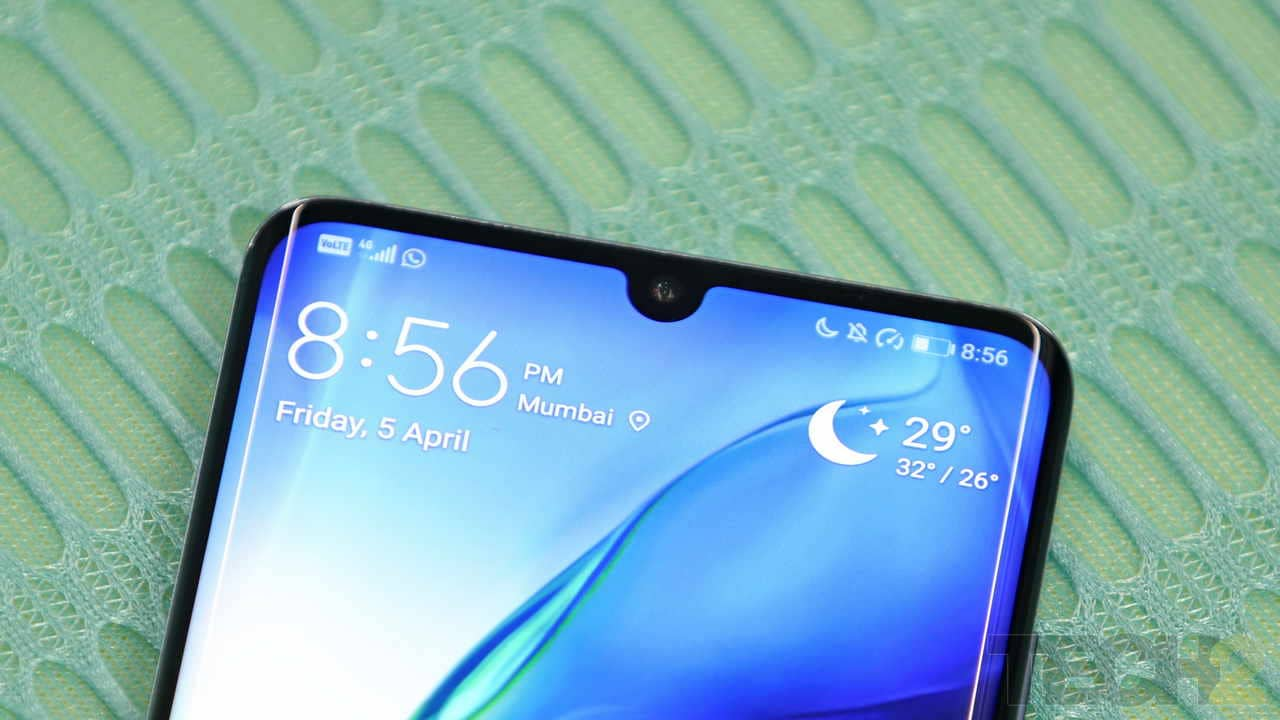 Look ma! No speaker! Image: Omkar Godambe[/caption] What did fall short, was the single speaker. Even at full volume, it just wasn’t loud enough for me to watch my favourite Netflix shows in a quiet room. While I appreciate the removal of the top speaker for better call quality, but I’d prefer a regular one for stereo sound considering the size of that gigantic display, which is good for watching movies.
Look ma! No speaker! Image: Omkar Godambe[/caption] What did fall short, was the single speaker. Even at full volume, it just wasn’t loud enough for me to watch my favourite Netflix shows in a quiet room. While I appreciate the removal of the top speaker for better call quality, but I’d prefer a regular one for stereo sound considering the size of that gigantic display, which is good for watching movies.
Staggering battery life
With that 7 nm chipset, a massive 4,200 mAh battery and that power-efficient FHD+ AMOLED display, the P30 Pro often left me with 30-40 percent juice at the end of a chaotic workday. [caption id=“attachment_6449931” align=“alignnone” width=“1280”]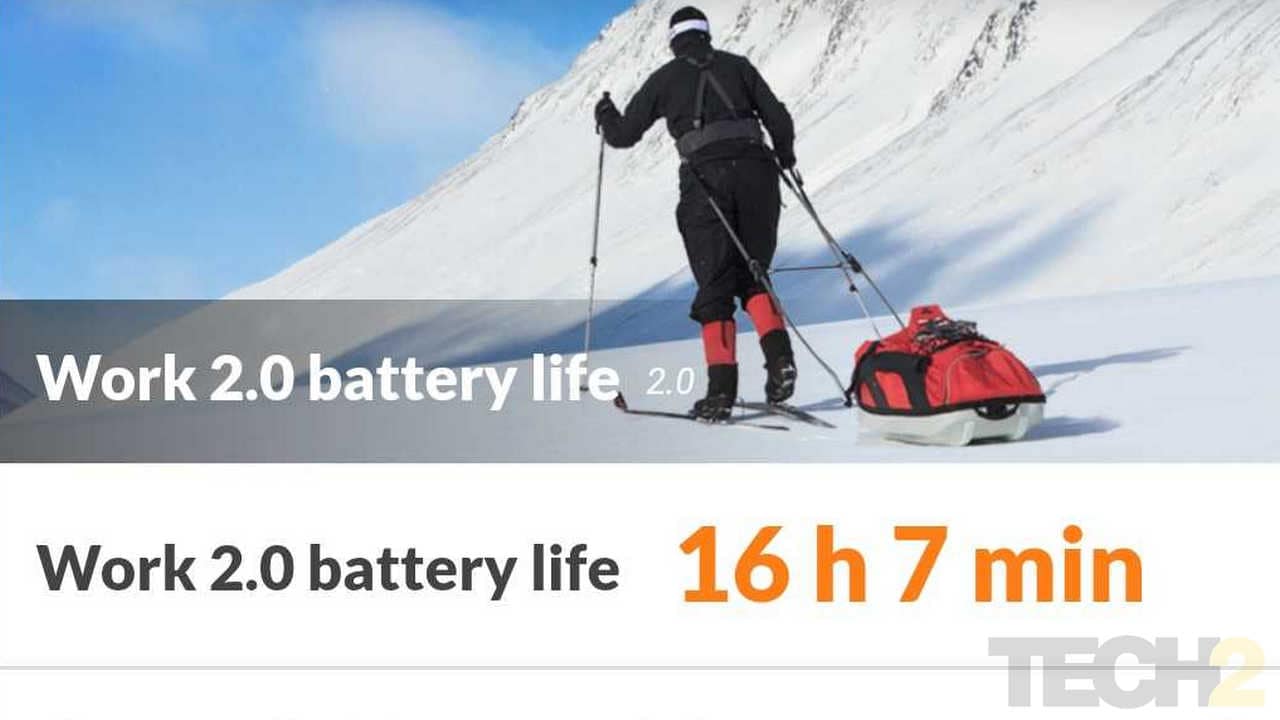 Our standard PC Mark Work 2.0 Battery Life test saw the P30 Pro rank second only to the View 20, which is technically the same package, but with a hole-punch display.[/caption] On weekends where I ended up using the phone for gaming and that camera, I was not looking for the charging point, being confident enough that the remaining 20 percent would get me enough juice till I got back home. All of this is after using two SIM cards, one for calls and the other for data. It indeed feels like the phone can go easily beyond a day for most users, which is pretty good for a premium flagship. [caption id=“attachment_6439101” align=“alignnone” width=“1280”]
Our standard PC Mark Work 2.0 Battery Life test saw the P30 Pro rank second only to the View 20, which is technically the same package, but with a hole-punch display.[/caption] On weekends where I ended up using the phone for gaming and that camera, I was not looking for the charging point, being confident enough that the remaining 20 percent would get me enough juice till I got back home. All of this is after using two SIM cards, one for calls and the other for data. It indeed feels like the phone can go easily beyond a day for most users, which is pretty good for a premium flagship. [caption id=“attachment_6439101” align=“alignnone” width=“1280”]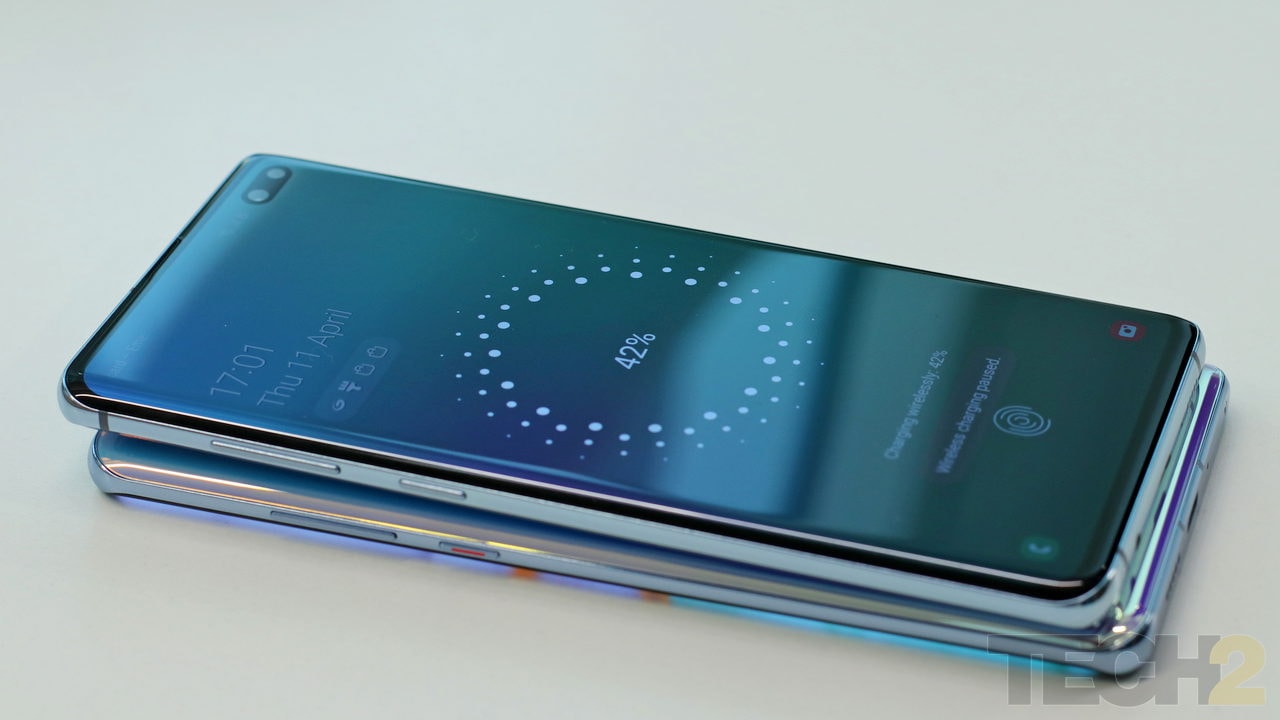 The P30 Pro’s reverse wireless charging is still a bit too slow to charge another device. Image: Omkar Godambe[/caption] And when you do run out of juice. All the P30 Pro needs is half an hour to go from 0-75 percent and another half an hour to reach 100 percent. And it reaches those numbers even with that 4,200 mAh battery inside! What has not improved is the reverse wireless charging system which at 2.5 W is still a bit too slow. You will be better off charging supported accessories with smaller batteries inside.
The P30 Pro’s reverse wireless charging is still a bit too slow to charge another device. Image: Omkar Godambe[/caption] And when you do run out of juice. All the P30 Pro needs is half an hour to go from 0-75 percent and another half an hour to reach 100 percent. And it reaches those numbers even with that 4,200 mAh battery inside! What has not improved is the reverse wireless charging system which at 2.5 W is still a bit too slow. You will be better off charging supported accessories with smaller batteries inside.
Verdict and price in India
The Huawei P30 Pro offers the best camera experience that will convince you to not carry your DSLR on your next vacation. It will give you the courage to click photos in lighting conditions that many of us would never dare to point our smartphones at. It’s basically an extension to your limited human vision. Still, it is not attempting to kill the DSLR or your regular point and shoot. This is a smartphone trying to be the best smartphone camera in the sense that it delivers photographs that are perfectly touched up and Instagram-ready the moment you have shot them. Videos are pretty much in line with the competition and far better than what you can get from previous Huawei devices. [caption id=“attachment_6388561” align=“alignnone” width=“1280”] Despite its flaws, I still dig it. Image Tech2/ Prannoy Palav[/caption] More importantly, it is a pretty good smartphone, with astounding battery life, good design and even packs in handy features like reverse wireless charging. The speaker-less Acoustic Display technology works wonderfully as a traditional speaker replacement as well. At this price point (Rs 71,990) on the Android side of things, the only new smartphone to recommend is the Galaxy S10 Plus
, which kind of feels a bit expensive, considering its Rs 73,900 price tag. You would be getting lesser hardware in terms of the sheer number of cameras as well. The
Pixel 3 XL
(Rs 83,000) gets really hard to recommend here, not just because of its slow charging or that gigantic notch, but considering that you get half the RAM and a quarter of the internal storage at a price tag that is more than Rs 10,000 higher than the P30 Pro. But if stock Android is what you crave, then there is no other smartphone in this given price range that will get you that (along with that bathtub notch). On the iOS side of things, it’s just the
iPhone XR
(Rs 59,000 onwards), or the
iPhone XS Max
(Rs 1,09,900 onwards) which is kind of redundant considering that the P30 Pro eats its camera for breakfast. Basically, the P30 Pro is a device that’s screaming with new technology, but you will not notice most of the new stuff that’s been added and that’s a good thing. Technology is not supposed to get in your way but simply let you explore more the way you are used to doing it. The software is still a sore point and I hope Huawei is working on something more modern in the near future so this is a tough choice that will be the deal breaker for many. Software aside, there is really nothing that stands in the way of this amazing smartphone that many in US will not have the opportunity to get their hands on. For buyers in India, consider yourself privileged to get your hands on this camera juggernaut, until the next Pixel arrives, that is!
Despite its flaws, I still dig it. Image Tech2/ Prannoy Palav[/caption] More importantly, it is a pretty good smartphone, with astounding battery life, good design and even packs in handy features like reverse wireless charging. The speaker-less Acoustic Display technology works wonderfully as a traditional speaker replacement as well. At this price point (Rs 71,990) on the Android side of things, the only new smartphone to recommend is the Galaxy S10 Plus
, which kind of feels a bit expensive, considering its Rs 73,900 price tag. You would be getting lesser hardware in terms of the sheer number of cameras as well. The
Pixel 3 XL
(Rs 83,000) gets really hard to recommend here, not just because of its slow charging or that gigantic notch, but considering that you get half the RAM and a quarter of the internal storage at a price tag that is more than Rs 10,000 higher than the P30 Pro. But if stock Android is what you crave, then there is no other smartphone in this given price range that will get you that (along with that bathtub notch). On the iOS side of things, it’s just the
iPhone XR
(Rs 59,000 onwards), or the
iPhone XS Max
(Rs 1,09,900 onwards) which is kind of redundant considering that the P30 Pro eats its camera for breakfast. Basically, the P30 Pro is a device that’s screaming with new technology, but you will not notice most of the new stuff that’s been added and that’s a good thing. Technology is not supposed to get in your way but simply let you explore more the way you are used to doing it. The software is still a sore point and I hope Huawei is working on something more modern in the near future so this is a tough choice that will be the deal breaker for many. Software aside, there is really nothing that stands in the way of this amazing smartphone that many in US will not have the opportunity to get their hands on. For buyers in India, consider yourself privileged to get your hands on this camera juggernaut, until the next Pixel arrives, that is!
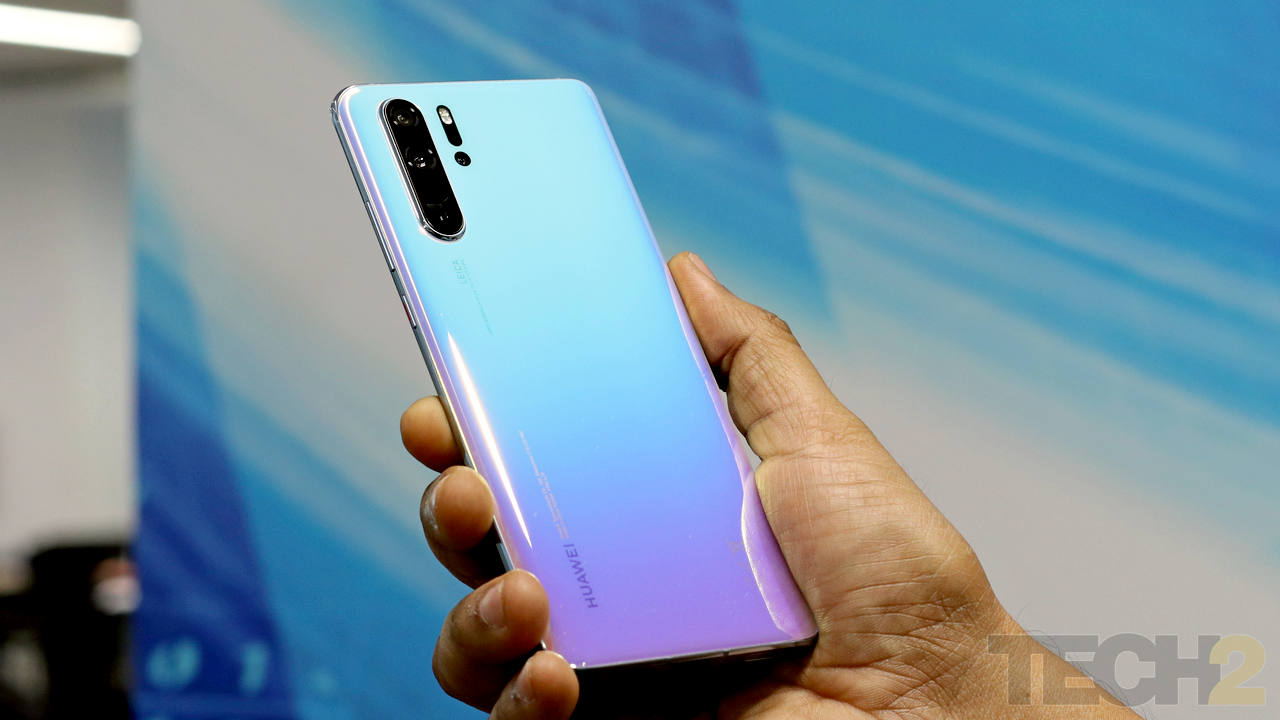)